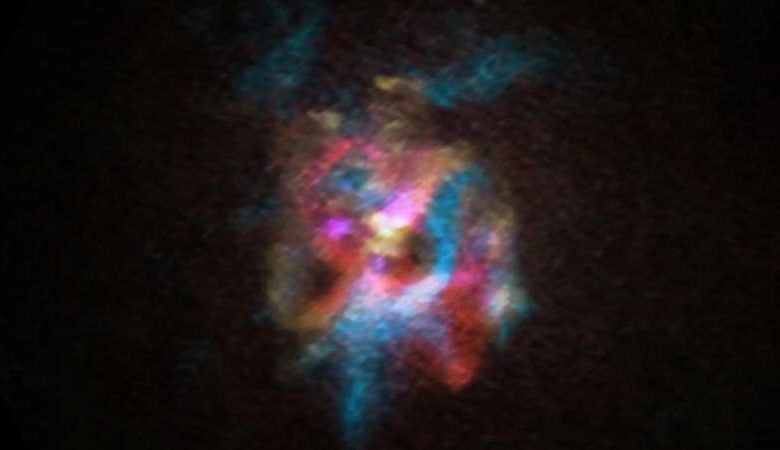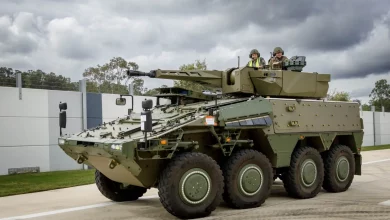Supergiant star’s gigantic bubble surprises scientists

Astronomers have discovered a vast and expanding bubble of gas and dust surrounding a red supergiant star—the largest structure of its kind ever seen in the Milky Way. The bubble, which contains as much mass as the sun, was blown out in a mysterious stellar eruption about 4,000 years ago. Why the star survived such a powerful event is a puzzle, scientists say.
The results have been accepted for publication in the journal Astronomy and Astrophysics. It is available on the arXiv preprint server. The team was led by Mark Siebert, from Chalmers University of Technology. Using the ALMA radio telescope in Chile, the researchers observed the star DFK 52—a red supergiant similar to the well-known star Betelgeuse.
“We got a big surprise when we saw what Alma was showing us. The star is more or less a twin of Betelgeuse, but it’s surrounded by a vast, messy bubble of material,” says Siebert.
The bubble, a complex of clouds of gas and dust, weighs as much as the sun, and extends out 1.4 light years from the star. That’s tens of thousands of times wider than our own solar system.
If the star was as close to us as Betelgeuse is, the bubble would appear to span a third of the full moon’s width in the sky.
ALMA’s radio observations let astronomers measure the motion of molecules in the cloud, revealing that the bubble is expanding. They believe it was formed when the star suddenly ejected part of its outer layers in a powerful explosion just a few thousand years ago.
“The bubble is made of material that used to be part of the star. It must have been ejected in a dramatic event, an explosion, that happened about 4,000 years ago. In cosmic terms, that’s just a moment ago,” says Elvire De Beck, astronomer at Chalmers.
The galaxy’s next supernova?
Why DFK 52 shed so much mass without exploding as a supernova is still unclear. One possibility is that the star has a hidden companion that helped it eject its outer layers.
“To us, it’s a mystery as to how the star managed to expel so much material in such a short timeframe. Maybe, like Betelgeuse seems to, it has a companion star that’s still to be discovered,” says Siebert.
Red supergiants like DFK 52 are nearing the ends of their lives and are expected to eventually explode as supernovae. Could this star be next?
“If this is a typical red supergiant, it could explode sometime in the next million years. We’re planning more observations to understand what’s happening—and to find out whether this might be the Milky Way’s next supernova,” says De Beck.





